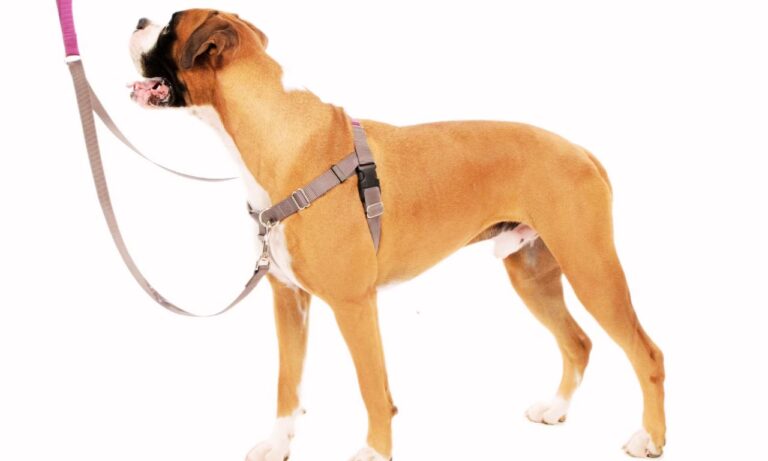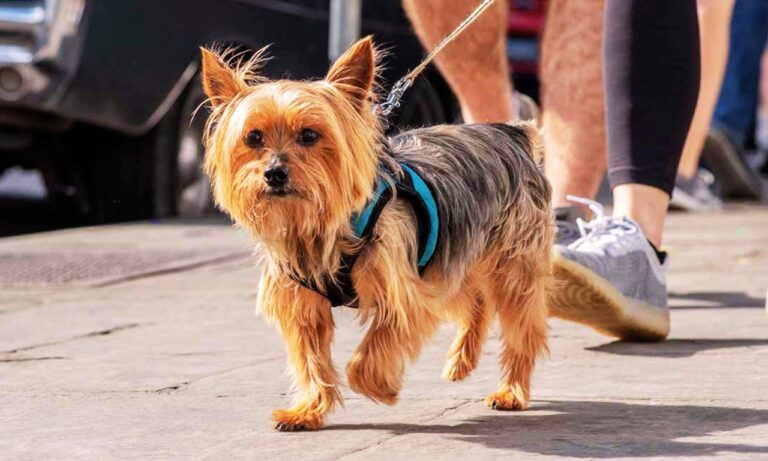| Summary: Wet cat food isn’t toxic to dogs, but it’s not ideal. It’s high in protein and fat, which can cause digestive upset or pancreatitis if consumed regularly. Occasionally eating it won’t harm most dogs, but long-term feeding may lead to nutritional imbalances. Stick to dog-specific food for balanced nutrition. |
I’ve often found myself wondering about the best choices for my furry friends when it comes to nutrition. As a pet owner with both cats and dogs, I’ve encountered many questions about the differences in their dietary needs. One question that has come up repeatedly is, “Is wet cat food bad for dogs?”
Today, I want to share my personal experience along with some expert insights to help you understand the potential risks and considerations when it comes to feeding wet cat food to dogs. Never lose sight of your furry friend! Discover the top GPS dog collars to keep your pet safe—just like choosing the right wet cat food ensures your feline’s health and happiness.
For detailed guidance on ensuring the perfect collar fit for your St. Bernard, check out the Best Practices for St. Bernard Collar Adjustment to keep your dog comfortable and secure.
Blog Highlights
ToggleIs Wet Cat Food Bad for Dogs?
From my early days as a pet owner, I learned that cats and dogs have very different nutritional needs. Cats are obligate carnivores, meaning they require a diet that is extremely high in protein and fats. Their bodies are designed to digest meat and process nutrients differently than dogs.
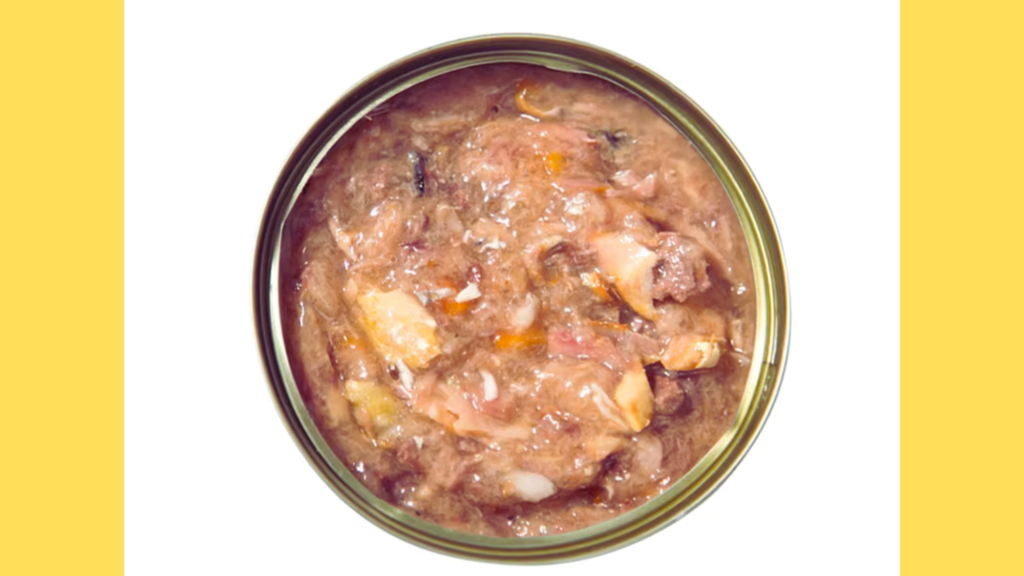
Dogs, on the other hand, are more omnivorous. This means they can handle a wider variety of foods, including grains and vegetables, which are often a part of their balanced diet.
Here are some key nutritional differences I discovered:
- Protein Levels: Wet cat food typically contains higher levels of protein, which is essential for a cat’s muscle maintenance and energy needs. However, a dog’s dietary protein requirement is not as high, and too much protein can sometimes strain a dog’s kidneys over time.
- Fat Content: Cats need a diet rich in fat to maintain their energy levels, so wet cat food usually has a higher fat content. Dogs require fat too, but an excessive amount can lead to digestive upset and, in the long run, contribute to weight gain.
- Caloric Density: Because of the high fat content, wet cat food is often more calorie-dense. This means that even a small serving could pack more calories than what a dog typically needs, potentially leading to unwanted weight gain.
- Vitamins and Minerals: Wet cat food is formulated with a specific balance of vitamins and minerals aimed at feline health. Some of these nutrients, like taurine, are essential for cats but not as critical for dogs. In some cases, the nutrient balance may not align well with a dog’s needs.
Understanding these differences is crucial because it sets the stage for understanding why feeding wet cat food to a dog—even if only once—might not be ideal. From automatic feeders to high-tech trackers, pet technology is revolutionizing pet care! Explore the newest innovations to improve your dog’s well-being, just as wet cat food provides optimal nutrition for your cat’s diet.
Ensure your Newfoundland’s comfort and security with expert tips on how to ensure a safe collar fit for Newfoundland.
Potential Risks of Feeding Wet Cat Food to Dogs
Over time, I’ve come to understand that while an occasional nibble might not cause long-term harm, making wet cat food a part of your dog’s diet could lead to several issues. Here’s what I learned about the risks:

- Digestive Upset: Dogs are used to a certain blend of nutrients from their own dog food. Switching to wet cat food, even for a short period, can sometimes result in an upset stomach, vomiting, or diarrhea due to the higher fat and protein content.
- Weight Gain: Due to its calorie-dense nature, wet cat food can contribute to an increase in your dog’s calorie intake. Over time, this may lead to unwanted weight gain, especially if the dog is not particularly active.
- Nutritional Imbalance: Consistently feeding a dog wet cat food could lead to a nutritional imbalance. Dogs need a different mix of vitamins and minerals than what is provided in cat food, which is specifically designed for the feline metabolism.
- Risk of Pancreatitis: High-fat diets can stress a dog’s pancreas. Pancreatitis is a serious condition characterized by inflammation of the pancreas and can lead to severe abdominal pain and further health complications.
- Allergic Reactions: Just like with any change in diet, there’s always the potential for an allergic reaction. Dogs might develop sensitivities to ingredients commonly found in wet cat food, leading to skin irritations or other allergic responses.
These risks have made me cautious about allowing any regular consumption of wet cat food by my dog, even if it might be tempting when food supplies run low.
When Might It Be Acceptable? Temporary Emergency Feeding
Despite the risks, there are situations when you might be wondering if it’s acceptable to feed your dog wet cat food—for instance, in a pinch or emergency. I remember one hectic day when I ran out of my dog’s regular food just as I was preparing for a busy evening. With no immediate options available, I considered offering a small amount of wet cat food to tide him over until I could get his proper food.
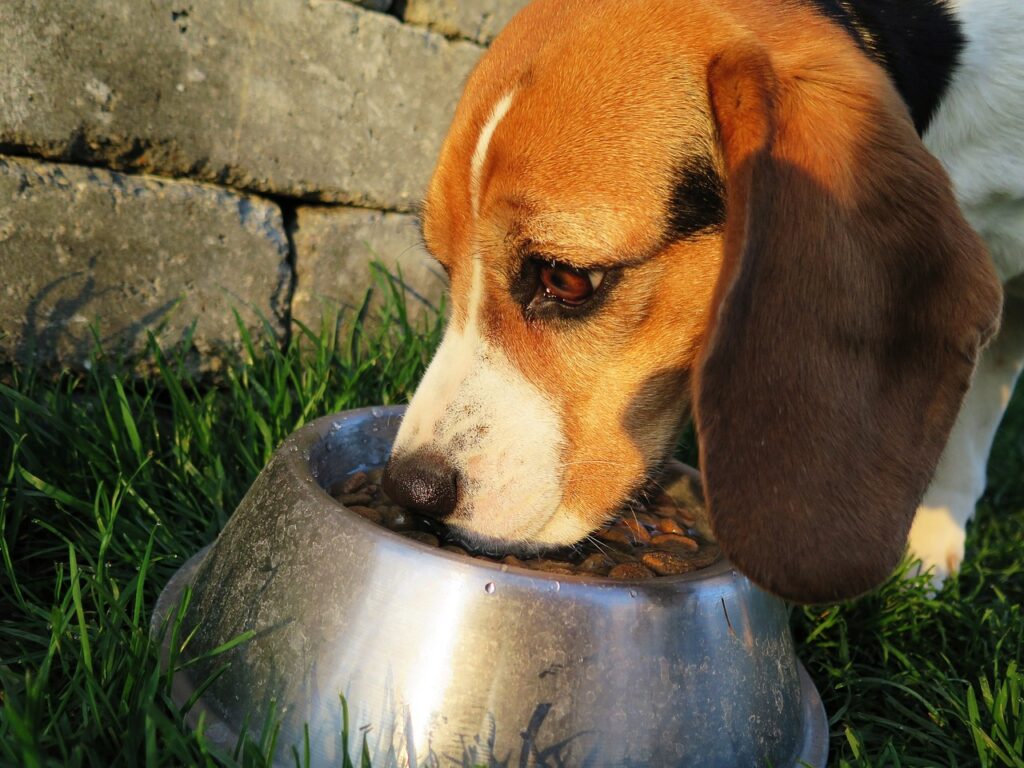
Considering an electronic collar for training? Learn about its benefits, drawbacks, and responsible usage—because just like training, selecting the best wet cat food requires knowledge and the right approach.
In emergency situations, a one-time serving of wet cat food might not harm your dog. However, it’s important to follow these guidelines:
- Use as a Temporary Measure: Wet cat food should only be used when absolutely necessary and for a very short duration. It’s not meant to replace a dog’s balanced diet.
- Monitor Your Pet: After feeding your dog wet cat food, keep a close watch for any signs of digestive upset. If you notice vomiting, diarrhea, or lethargy, it might be a sign that his system is not adjusting well.
- Adjust Portion Size: Because wet cat food is calorie-dense, consider offering a smaller portion than you would your usual dog food meal. This helps prevent an overload of calories and fat.
- Transition Back Quickly: Once you’re able to obtain your dog’s regular food, transition back to it as soon as possible. If needed, mix a little of the dog food with the cat food to help ease the transition.
This approach allowed me to manage a short-term crisis while keeping my dog as comfortable as possible.
Discover the ideal fit by learning what size collar for Newfoundland dog to ensure your pet’s comfort and safety.
Practical Advice for When You’re in a Pinch
Based on my experience, here are some practical tips for those moments when you might have to resort to feeding your dog wet cat food:
- Plan Ahead: Always try to have an emergency stash of your dog’s regular food. A small reserve can prevent the need to rely on alternative food sources.
- Smaller Portions Work Better: Since wet cat food is richer in calories, offer your dog a smaller portion to avoid overfeeding.
- Keep an Eye Out: After serving, monitor your dog closely for any signs of discomfort. A healthy pet should bounce back quickly, but any prolonged symptoms should be a red flag.
- Mix if Possible: If you have any of your dog’s food on hand, try mixing it with the wet cat food. This can help dilute the differences and make the transition smoother.
- Consult Your Vet: If you’re ever unsure or if your dog shows any adverse reactions, it’s best to consult your veterinarian immediately for advice.
Taking these steps helped me feel more in control during unexpected situations, ensuring that my dog remained healthy even when his regular food wasn’t available.
My Personal Journey: Learning from Experience
I’ve always considered my pets to be part of the family, so their health and well-being are incredibly important to me. One particular incident that stands out is when I had to feed my dog wet cat food during an unexpected delay in my regular shopping routine. I was initially very anxious about the decision because I knew about the nutritional differences between the two foods.
That day, I measured out a small portion of the wet cat food and mixed it with a little water to make it easier on his stomach. I then observed him carefully over the next several hours. Fortunately, my dog did not exhibit any major signs of distress. He seemed to enjoy the meal, and his behavior remained relatively normal. However, I made sure to get back to his regular diet as soon as possible.
This experience taught me several valuable lessons:
- Preparation Is Key: Always have a backup plan. An emergency reserve of your dog’s regular food can alleviate a lot of stress.
- Small Portions Are Better: Adjusting the serving size can prevent overfeeding and reduce the risk of digestive issues.
- Observation Matters: Watching your dog after a dietary change is crucial. Early detection of any issues can prevent more serious health concerns later on.
- Don’t Hesitate to Ask for Help: I reached out to my veterinarian to confirm that a one-off meal of wet cat food wouldn’t harm my dog. Their reassurance helped me manage the situation with confidence.
These lessons have shaped how I handle any unexpected dietary challenges and reinforced the importance of understanding my pets’ nutritional needs.
For expert tips on how to fit a collar on a Belgian Shepherd, this guide offers simple steps to ensure your dog’s collar fits securely and comfortably.
Nutritional Comparison: Wet Cat Food vs. Dog Food
To better illustrate the differences, here’s a simple table that compares some of the key nutritional aspects of wet cat food and typical dog food:
| Nutrient | Wet Cat Food (Typical) | Dog Food (Typical) |
| Protein | 8-12% on a wet basis | 6-10% on a wet basis |
| Fat | 4-8% on a wet basis | 2-5% on a wet basis |
| Calories | Higher calorie density | Lower calorie density |
| Moisture Content | 75-80% moisture | 70-75% moisture |
| Key Nutrients | Taurine, high vitamin A | Balanced vitamins and minerals for canines |
This table highlights the fact that wet cat food is formulated to meet the needs of cats—richer in protein and fat—whereas dog food is balanced specifically for dogs. The higher calorie density of wet cat food means that even a small serving can contribute a significant number of calories, which is not ideal for most dogs over time.
What to Do If Your Dog Eats Wet Cat Food
If you ever find that your dog has eaten wet cat food, here’s a step-by-step guide on how to handle the situation:
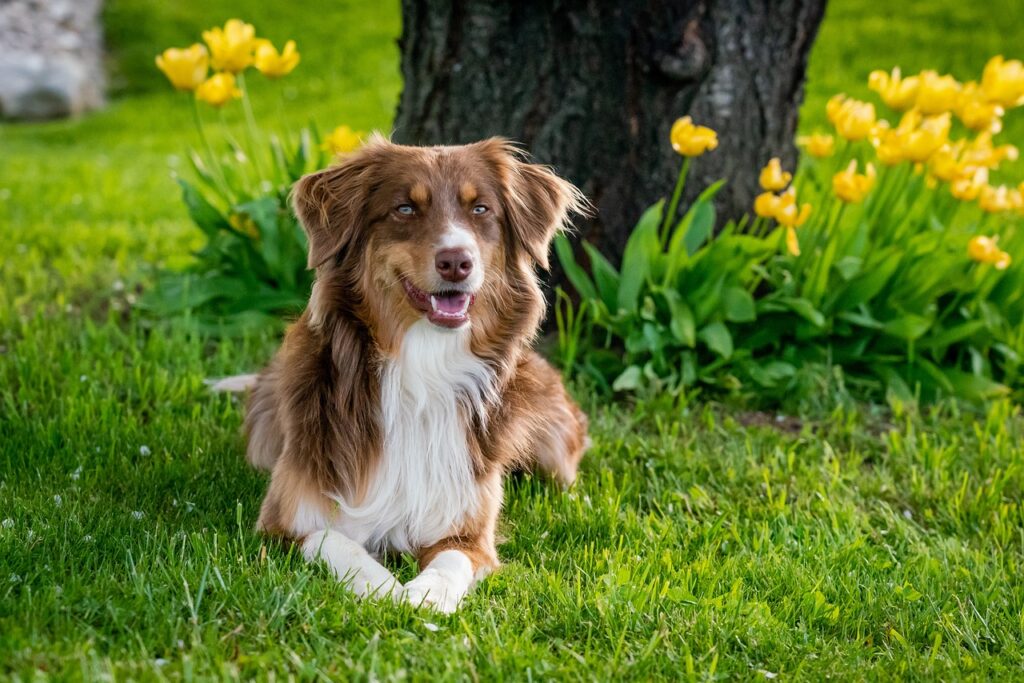
- Stay Calm: The first step is to remain calm. One meal of wet cat food is unlikely to cause lasting harm to a healthy dog.
- Assess the Situation: Determine how much wet cat food your dog has consumed. If it’s only a small amount, it’s likely nothing to worry about.
- Monitor for Symptoms: Keep a close watch for any signs of gastrointestinal distress such as vomiting, diarrhea, or changes in energy levels.
- Adjust Their Next Meal: If your dog has had a high-calorie meal, consider reducing the portion size of their next meal to balance their overall daily intake.
- Consult a Veterinarian: If your dog shows any signs of discomfort or if you’re worried about the amount consumed, don’t hesitate to contact your veterinarian for guidance.
Taking these steps helps ensure that your dog stays healthy and that any potential issues are addressed quickly.
When Might Wet Cat Food Be an Acceptable Substitute?
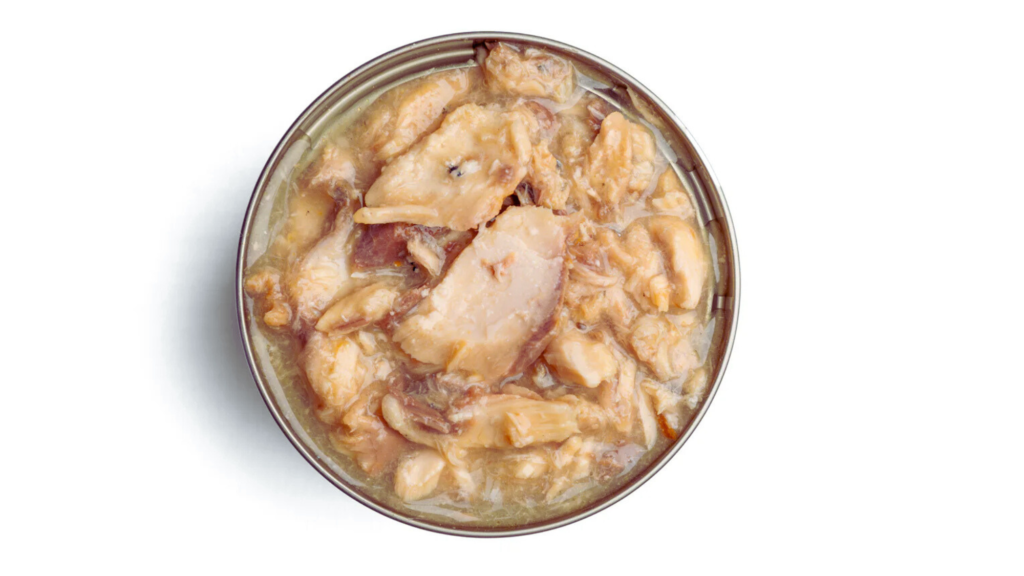
While wet cat food isn’t ideal for dogs, there are very rare scenarios where it might be acceptable as a one-time substitute. I’ve learned that if you’re in an emergency—say you forgot to pick up your dog’s food or there’s a temporary shortage—using a very small amount of wet cat food might be better than having nothing at all. However, there are important points to remember:
- Short-Term Only: Use it only as a last resort for one meal or one day at most.
- Avoid Regular Use: Regularly feeding your dog wet cat food can lead to nutritional imbalances and potential health issues.
- Mix When Possible: To reduce the impact, try mixing it with a bit of water or even with the dog food you have to dilute the nutritional differences.
- Observe Your Dog: Always watch for any signs of discomfort, as some dogs might be more sensitive to dietary changes than others.
This approach has worked for me in emergencies, but I always ensure that I return to a proper dog diet as soon as I can.
For detailed guidance on selecting the correct collar size for a Belgian Shepherd, this article provides essential tips to ensure your dog’s comfort and safety.
What Do Experts Say?
Over time, I’ve also taken the opportunity to discuss these dietary concerns with veterinarians and pet nutrition experts. Many professionals agree that while the occasional accidental ingestion of wet cat food isn’t likely to cause serious harm, it should never become a substitute for a balanced dog diet. They emphasize that the specific nutrient ratios in dog food are essential for maintaining proper health, particularly for long-term feeding.
Experts also warn about the risks of high-fat diets leading to conditions like pancreatitis, which can be a severe health issue for dogs. Therefore, if your dog has any pre-existing conditions, even a single meal of wet cat food should be approached with caution.
The consensus is clear: in emergencies, a tiny bit of wet cat food is unlikely to do lasting harm, but it’s critical to switch back to a dog-specific diet as soon as possible.
Frequently Asked Questions
Here are some questions I often encounter on this topic, along with my personal insights and the advice I’ve gathered:
Is it really bad if my dog eats wet cat food once?
For most healthy dogs, a one-time meal of wet cat food won’t cause lasting harm. However, it isn’t ideal due to the higher protein, fat, and calorie content.
How much wet cat food is too much for my dog?
Even a small portion can be significant because of its calorie density. It’s best to offer only a very small amount if needed and not let it become a regular part of the diet.
What symptoms should I look for after my dog eats wet cat food?
Watch for signs of digestive upset such as vomiting, diarrhea, or changes in energy levels. If you notice any of these symptoms, consult your veterinarian promptly.
Can I mix wet cat food with my dog’s food to make it safer?
Yes, mixing can help reduce the concentration of nutrients that might upset your dog’s stomach. Gradually transition back to the regular dog food to avoid digestive issues.
Should I be worried about long-term effects if this happens once?
A one-off incident is unlikely to have long-term effects on a healthy dog. However, frequent consumption could lead to weight gain and nutritional imbalances, so it’s best to avoid it.
Final Thoughts and Takeaways
In my journey as a pet owner, I’ve learned that the best nutrition for our dogs is one that’s tailored specifically to their needs. While wet cat food is an excellent choice for our feline friends, it is not formulated with dogs in mind.
Set your pup up for success with the right training gear! Check out this ultimate list of essential dog training tools—because whether it’s dog training or choosing wet cat food, the right choices lead to better results.
The differences in protein, fat, and calorie content mean that even though a single meal of wet cat food might not be disastrous, it isn’t a sustainable or ideal option for our canine companions. Hope so, now you know the answer to your question, “Is wet cat food bad for dogs?”.
To sum up the key points:
- Nutritional Imbalance: Wet cat food is designed for the nutritional needs of cats and is typically higher in protein and fat than dog food. Regular consumption can lead to an imbalance in your dog’s diet.
- Potential Health Risks: Even though one meal might be safe for most dogs, there are risks such as digestive upset, weight gain, and in severe cases, pancreatitis.
- Temporary Use Only: In an emergency, a very small amount of wet cat food can be used to tide your dog over, but it should never replace a balanced, species-appropriate diet.
- Monitor Your Dog: Always keep a close watch on your dog after any dietary changes. Early detection of any issues can help prevent more serious complications.
- Plan Ahead: Prevent emergencies by keeping an adequate supply of your dog’s regular food and ensuring that the feeding routines for your cats and dogs remain separate.
By keeping these takeaways in mind, you can ensure that your dog’s health remains a priority even when unexpected situations arise. Remember, a well-informed pet owner is better equipped to handle emergencies and maintain the well-being of their pets.
Discover the perfect collar size for an Anatolian Shepherd Dog to ensure comfort and security for your furry friend.


